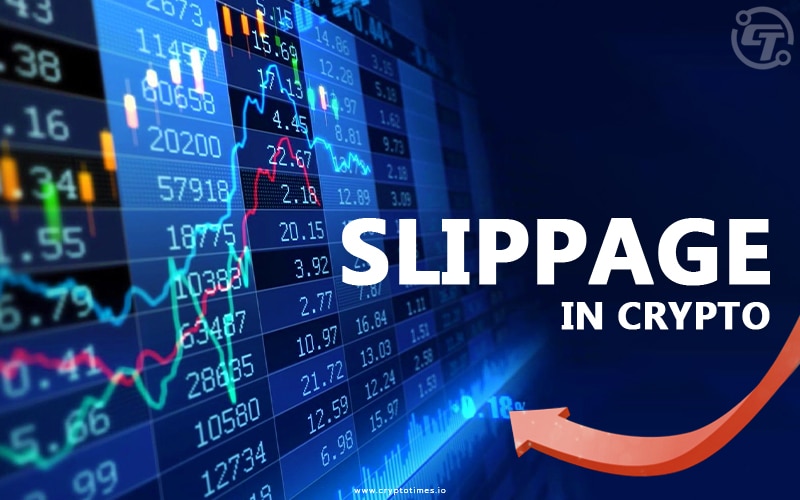Cryptocurrency has driven the attention of many traders and investors after its inception. However, its volatility and price fall are still questionable. We have seen many ups-and-downs through its journey. Crypto slippage is one of these nightmares for traders, investors, and brokers.
Slippage in crypto, also known as trade slippage, prohibits investors from trading at their desired value. For the sake of simplicity, you can consider slippage as the difference between the expected value and the actual value of crypto at which the trade is closed. One of the primary reasons behind it is the volatility of the crypto market, which creates a difference in trade value when you place an order, and when it actually enters the market. However, you can take support of the Bitcode method that helps impressively to prevent damage.
Slippage In Crypto
When an individual gets digital currencies through any crypto exchange, the price he places an order for is hardly the applicable price. The remainder of the expected price and the closing price of the trade (actual price) is called the slippage. It is not restricted to the crypto world. This phenomenon is taken from the stock market & Forex. However, the fluctuating nature of crypto assets significantly impacts crypto investors and traders.
For example, you have placed the order for X cryptocurrency at $10. However, your order got confirmed at $10.10 or $9.90, and that actually impacts your trading strategy. One of the main problems crypto slippage faces is the deficiency of continuous implementation across multiple brokers and exchanges.
How Does Slippage In Crypto Work?
The time gap between order placement and order execution provides ample time for price volatility. This volatility can be seen due to excessive demand, enhanced liquidity, or any information causing the market to move. The short lag or interval between the placement and execution of the order is sufficient for the value of a coin to fluctuate, enabling the trader to experience the results. Although the prices generally do not oscillate enough to produce huge losses, slippage may have negative results if your levels of trade are sky-scraping and everything matters.
Types Of Slippage
1. Positive Slippage
Positive slippage prompts when the actual price falls behind the expected price of buy order. This allows a trader to buy trade at a better price. While In the case of sell orders, the fills of traders are too many, which helps them box up higher profits.
2. Negative Slippage
Negative Slippage occurs when the actual price is higher than the expected price and puts them in trouble. This happens when a coin’s value goes up during the placement and execution of the order, reducing the trader’s purchasing power.
Both positive and negative slippages in crypto are also applicable while selling your coins/tokens on a crypto exchange.
Also Read: 10 Best Crypto Trading Strategies
Tips to Avoid Slippage In Crypto
There are some ways by which one can avoid crypto slippage and its potential losses.
1. Move Out of Market Orders to Limit Orders
Market orders work so that tokens can be traded at the market’s best prices available currently. Such an order is generally executed instantly, but its price or value is not assured. On the other side of the coin, limit order enables you to adjust the price of your desire, at which you are convenient to trade tokens. Each of the largest crypto exchanges contains a limit order option, where buying and selling are automatically completed when the token or coin you want is available at the price you want.
2. Utilize Slippage Tolerance
It is an attribute of some latest crypto exchanges that enable you to adjust a specific %age of slippage you can afford. If an individual is comfortable with 0.5% slippage, it can be added as slippage tolerance, and in case the slippage is not up to the adjusted percentage, the order will pass on. Otherwise, the order would automatically be abandoned. This characteristic is crucial when tiny price fluctuations matter or for the small margins of arbitrage traders.
3. Do Not Trade During Stressful Time
Whether crucial information is imminent or the market contains emotions regarding the crash or any other event, it would be the most appropriate option not to trade. The other fluctuations can produce massive slippage and severe damage.
4. Do Not Trade Illiquid Instruments
When we talk about slippage, poor liquidity is another significant factor. Crypto startups that are not yet correctly developed and Altcoins would have lower liquidity and commercial interest. Preventing them will help you to make your trading fills better.
Conclusion
Cryptocurrencies can be highly fluctuating, and traders must consider the long-haul effects of negative slippage in crypto. Learning the operating mechanism of slippage in crypto will make your trading effective and reduce costs.
Follow The Crypto Times for more Crypto Insights!






